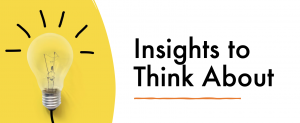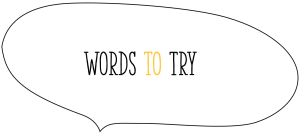9 Social Institutions and Oppressions
Rebecca Yoshizawa
 Let’s do a little social theory-lite redux here! The classic problem of sociology is the tension between structure and agency. Agency is the capacity an individual has to choose and to act. Sometimes it is understood as “free will.” In contrast, structure refers to anything within a social system that places limitations on the type and/or latitude of agency. We can talk about social structures as myriad entities that force, pressure, coerce, require, impose, or encourage certain forms of agency to materialize in the actions of an individual. Three kinds of social structures can be discerned, as in this table:
Let’s do a little social theory-lite redux here! The classic problem of sociology is the tension between structure and agency. Agency is the capacity an individual has to choose and to act. Sometimes it is understood as “free will.” In contrast, structure refers to anything within a social system that places limitations on the type and/or latitude of agency. We can talk about social structures as myriad entities that force, pressure, coerce, require, impose, or encourage certain forms of agency to materialize in the actions of an individual. Three kinds of social structures can be discerned, as in this table:
| Kinds of Social Structures | |||
| Social Institutions | Statuses and Roles | Social Groups | |
| Descriptions | Meeting broad societal needs, giving societies their overarching structure | Groups that members closely identify with and that are involved in primary and secondary socialization | Statuses are positions relative to others within a particular group; roles are the expectations associated with those positions |
| Examples | Governance, education, military, healthcare, family, economy, religion, police | Family, friends, school, neighbourhood, congregation, community | Race, class, gender, sex, sexuality, occupation, education level |
Let’s look at how gender works in social institutions.
Social Institutions are social structures that meet broad societal needs and give societies their overarching structure, such as government, education, and healthcare. They serve the common purposes that practically every society needs to fulfill, laying foundations for broad social systems. For example, governance is a social institution that provides for collective decision-making in a society. The Canadian state as a society is served by government, some of which is elected democratically and organized in federal, provincial, and municipal levels. Other societies utilize different forms of governance, such as eldership in Indigenous societies, or monarchies. The differences in social institutions across societies represent the different values and priorities of the dominant groups in those societies. Because of their structuring role, institutions will tend to create and reproduce existing social hierarchies. So, we can refer to “institutional racism,” “institutional sexism,” and other forms of oppression when talking about this.
For example, Canada is a sexist society and a patriarchy, wherein men are enabled to survive and thrive more so than women and others marginalized by dominant gender ideology. In a patriarchal social system, it is not surprising to see men overrepresented in positions of power in government.
Canada is also a racist society founded upon colonial and genocidal actions designed to eradicate the Indigenous peoples who occupied the land for time immemorial. Despite a hearty representation of people of colour among those residing in Canada as well as the historical presence of Indigenous people in this, their traditional territory, white people are over-represented in positions in government. This is a form of white privilege: the power of whiteness in shaping social life.
| Institution | Function |
| Governance | Collective decision-making |
| Education | Intergenerational transference of knowledge |
| Military | Territorial defence and/or expansion |
| Economy | Circulation of resources |
| Healthcare | Maintenance of life |
| Police | Physical arm of the government |
| Religion | Provides answers to meaningful questions not given by other institutions |
Because institutions are so important to the functioning of a society, they present clear indicators of privilege and oppression. We can say that social institutions are a good litmus test for broader social oppressions: the the unfair and unequal treatment of groups or categories of people based upon perceived or real differences from the dominant group.
 Institutional racism: discrimination based on membership in a particular racialized group within an institution
Institutional racism: discrimination based on membership in a particular racialized group within an institution
Institutional sexism: discrimination based on gender or sex within an institution
Social structure: patterns of human behaviour that persist through time and provide the context of our life chances and life choices
Social system: the network of individuals, groups, and institutions that makes a tangible whole
Agency: the capacity an individual has to choose and to act
Oppression: injustice that arises from social hierarchies
White privilege: the power of whiteness in shaping everyday life; how whiteness confers protection in institutions and society
discrimination based on membership in a particular racialized group within an institution
discrimination based on gender or sex within an institution
patterns of human behaviour that persist through time and provide the context of our life chances and life choices
the network of individuals, groups, and institutions that makes a tangible whole
the capacity an individual has to choose and to act
injustice that arises from social hierarchies
the power of whiteness in shaping everyday life; how whiteness confers protection in institutions and society

